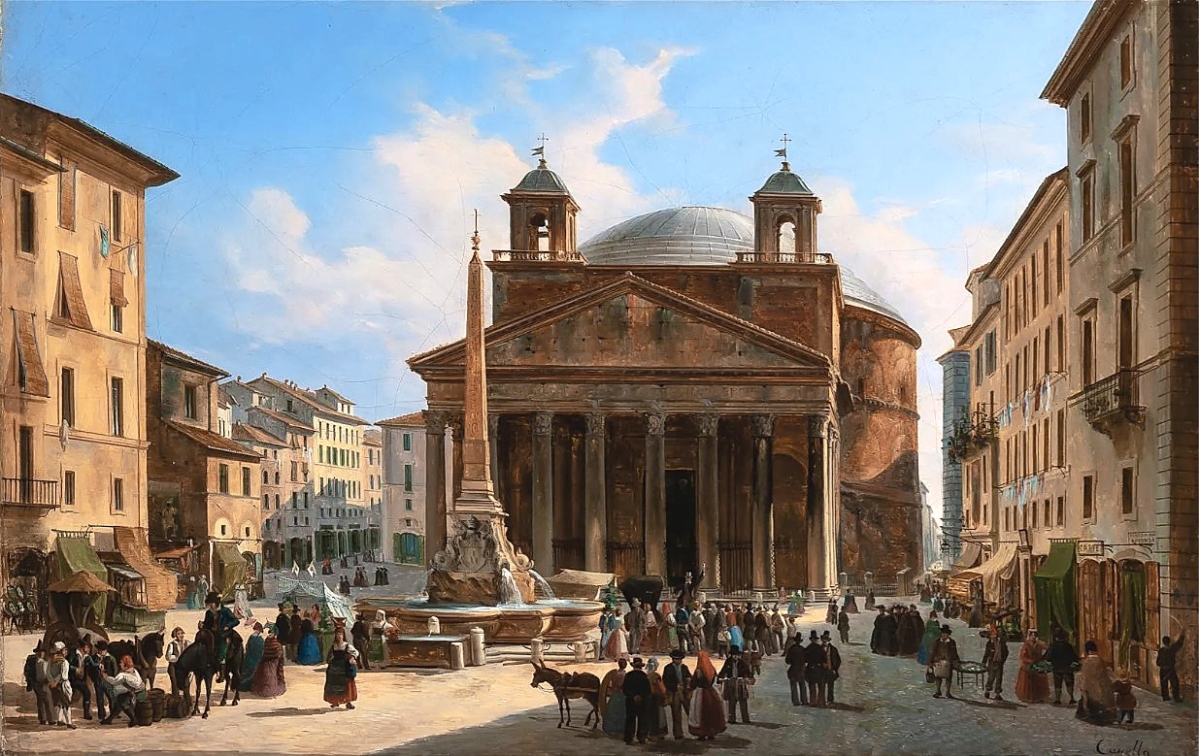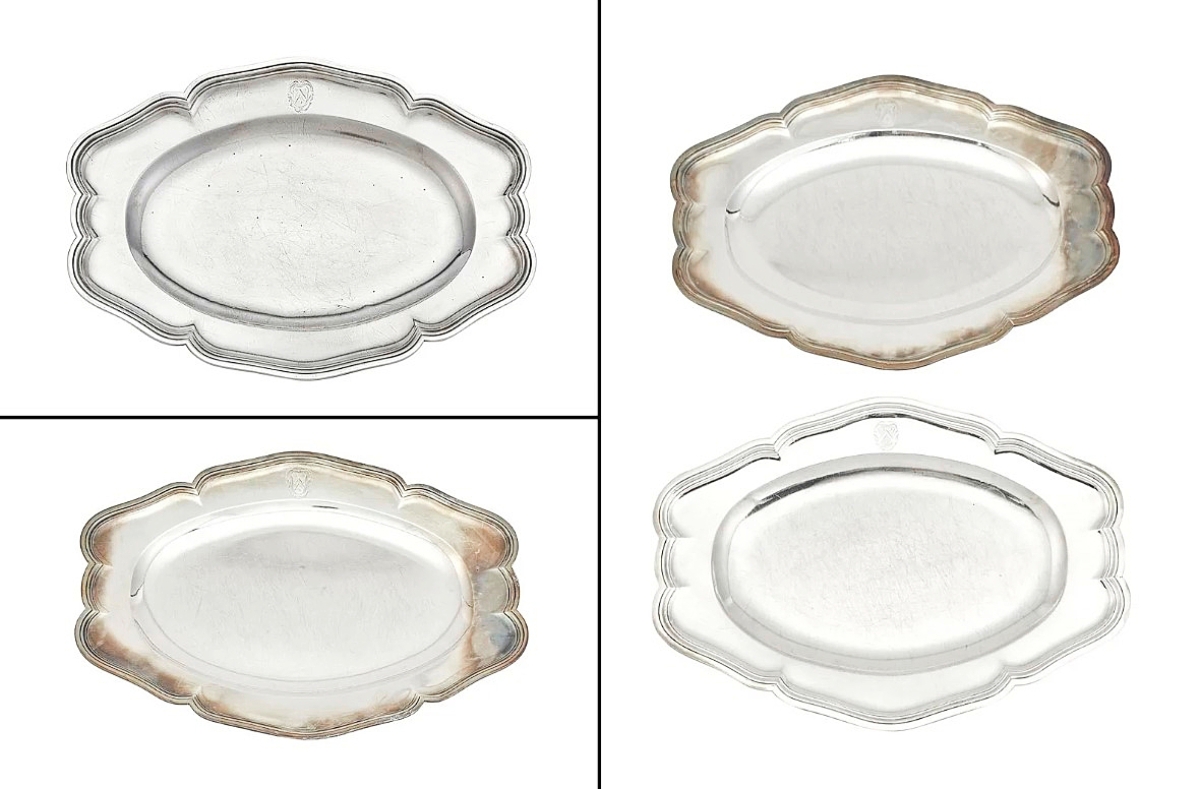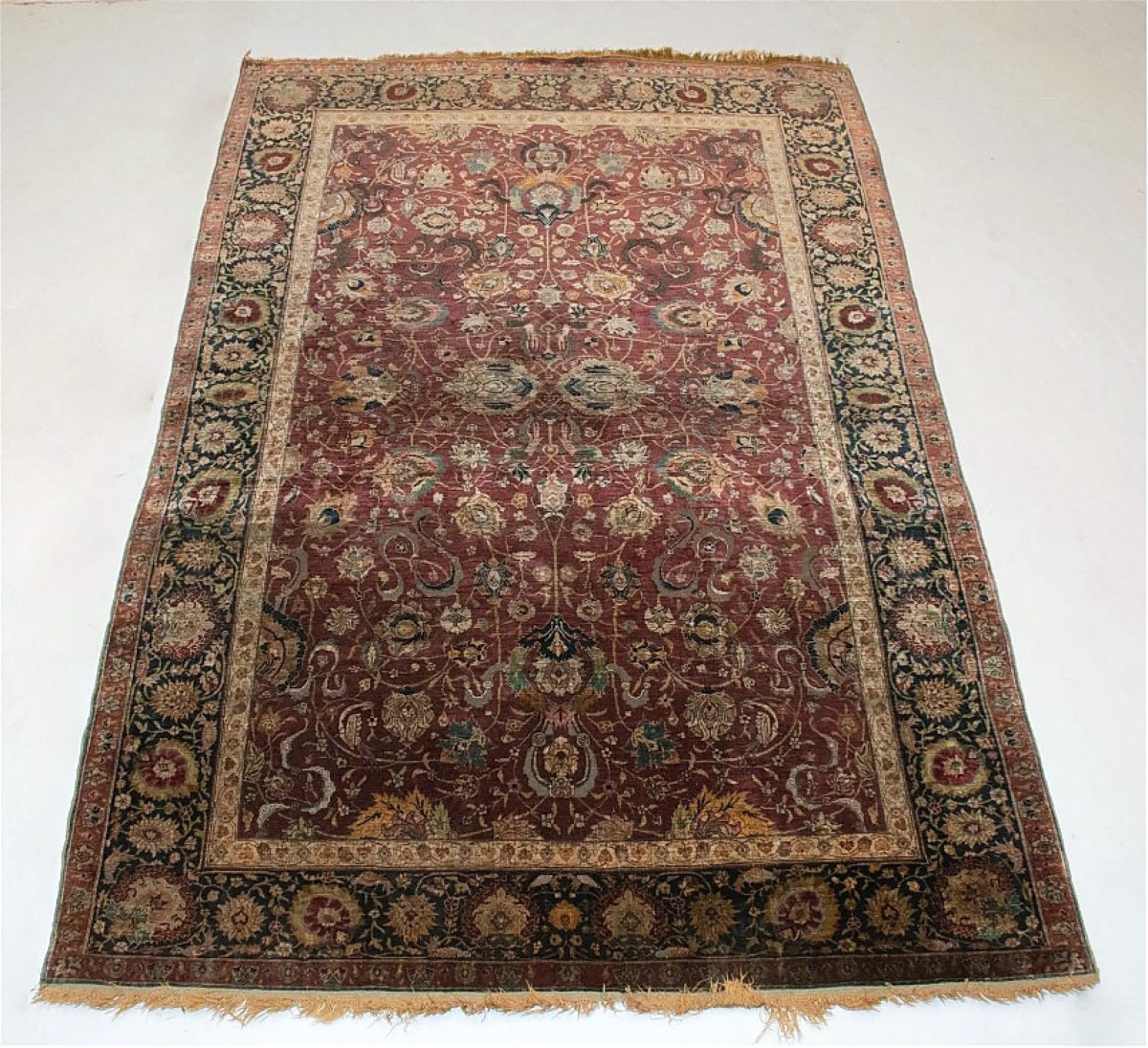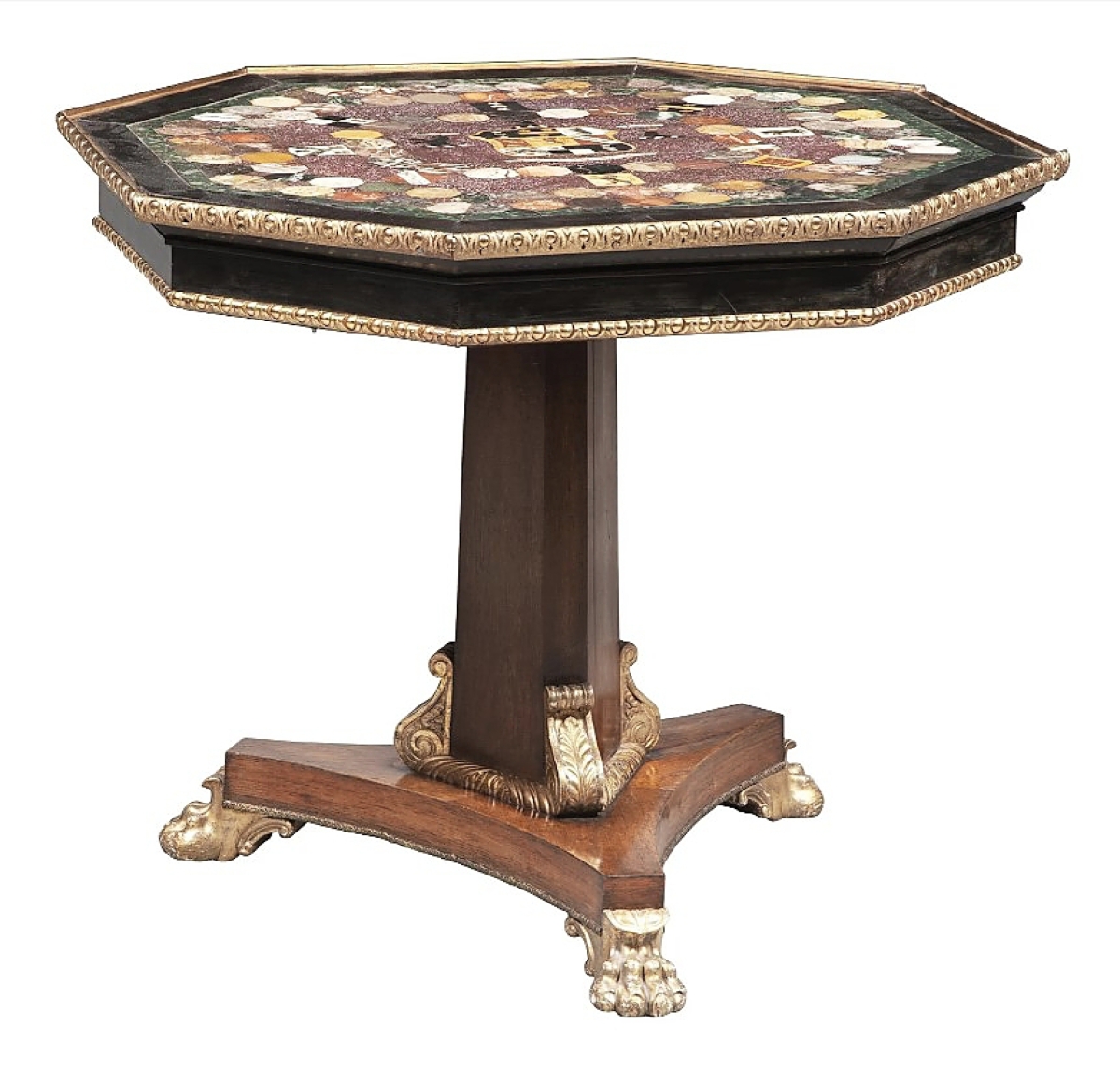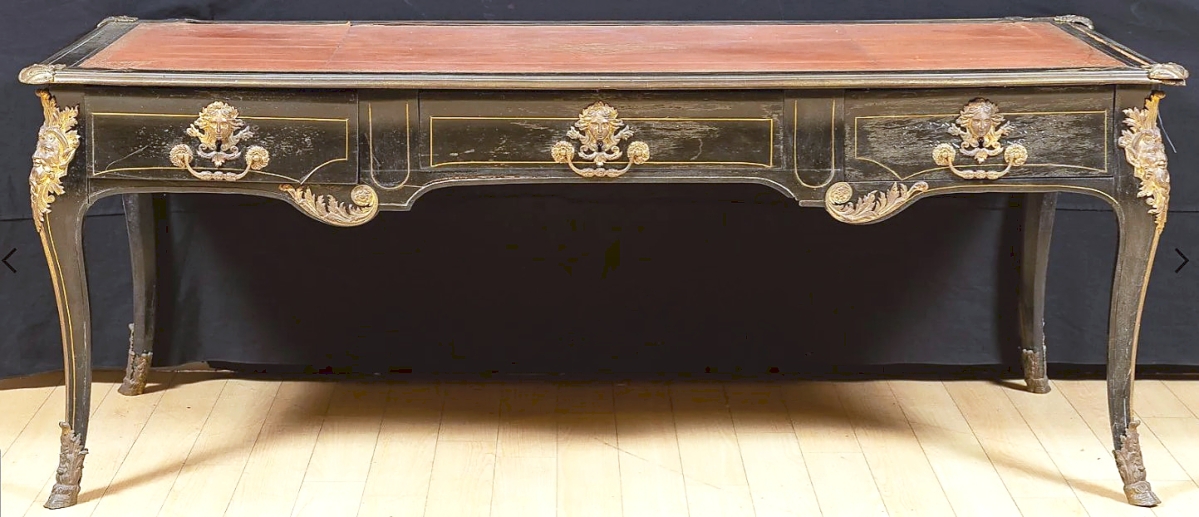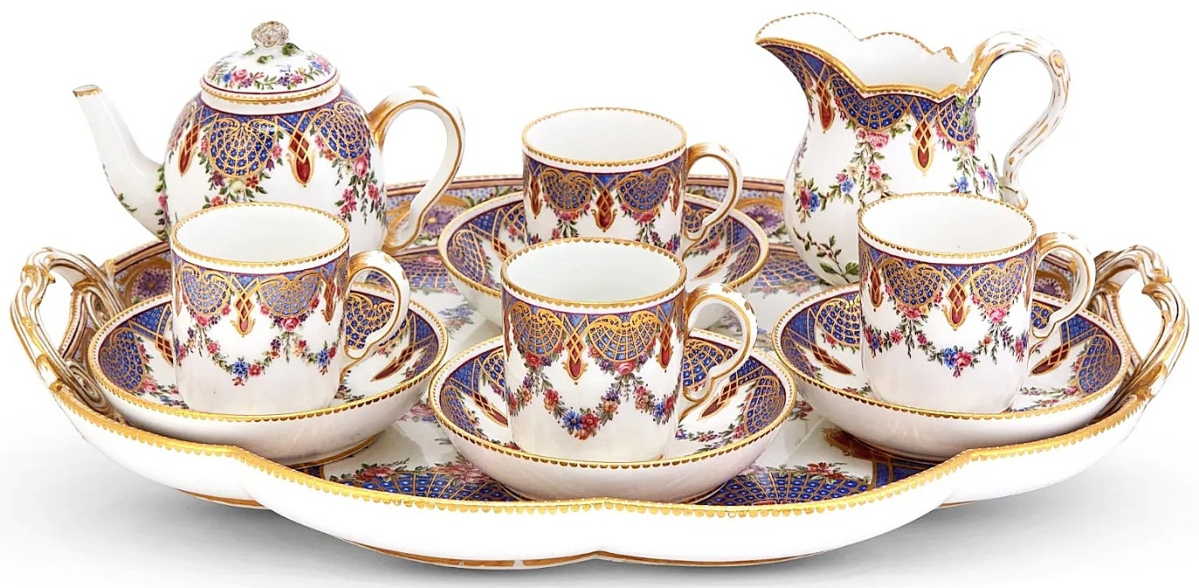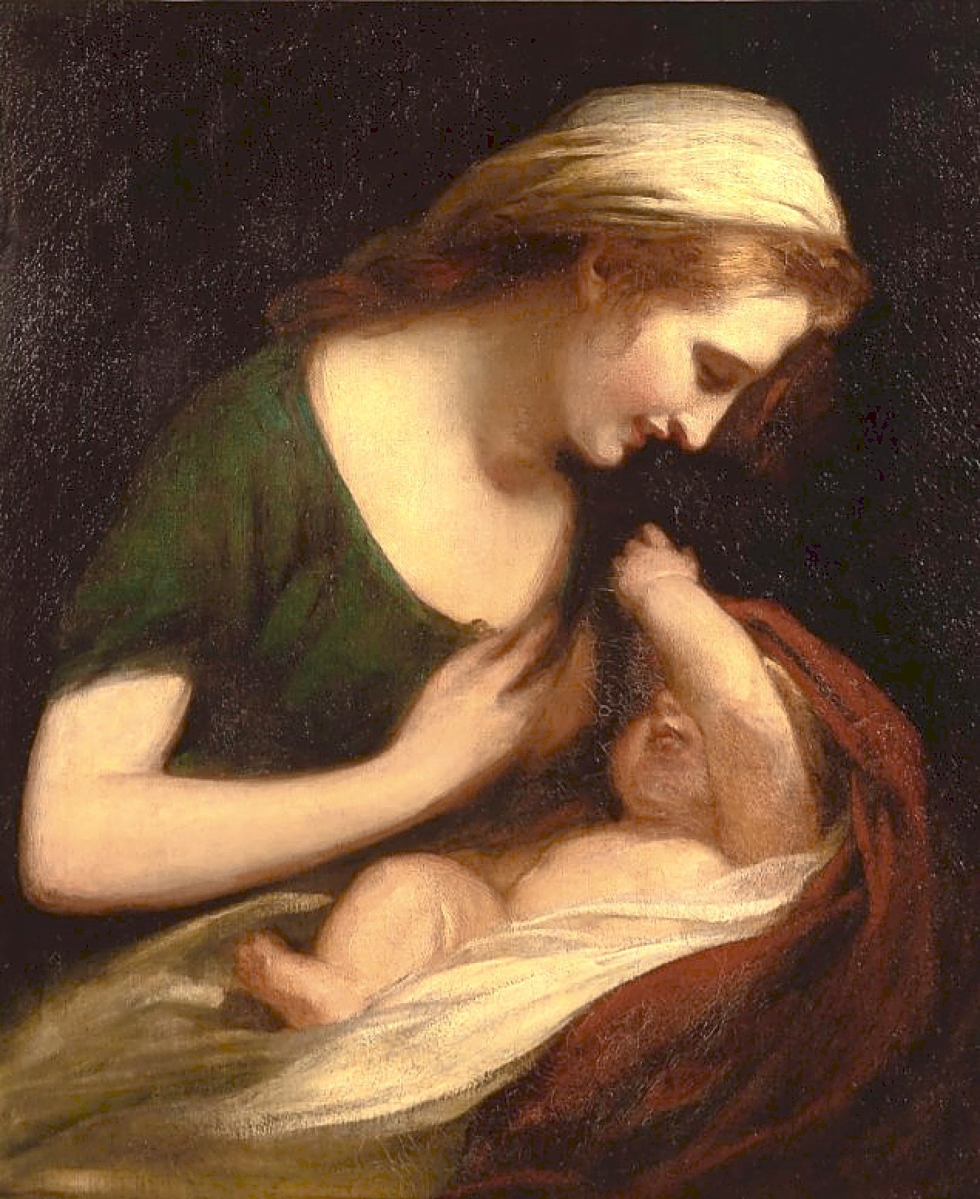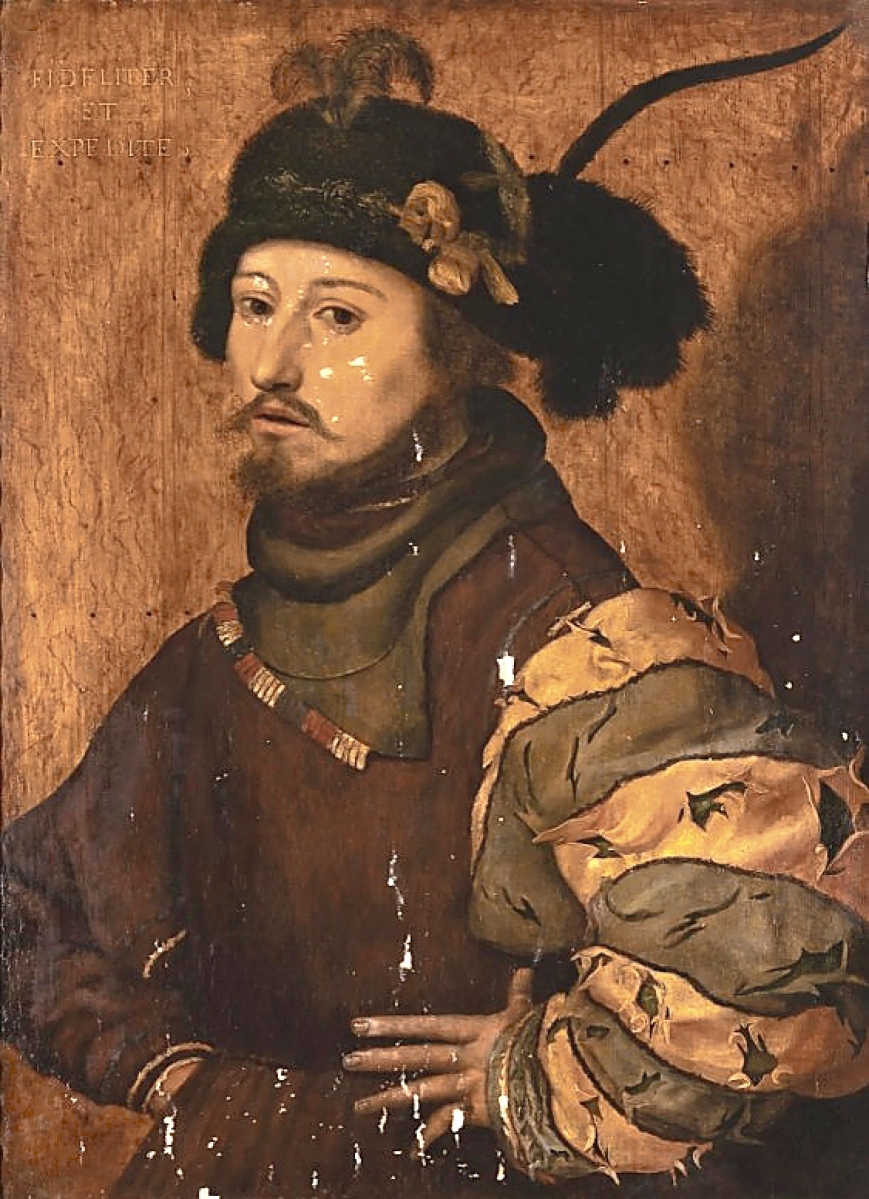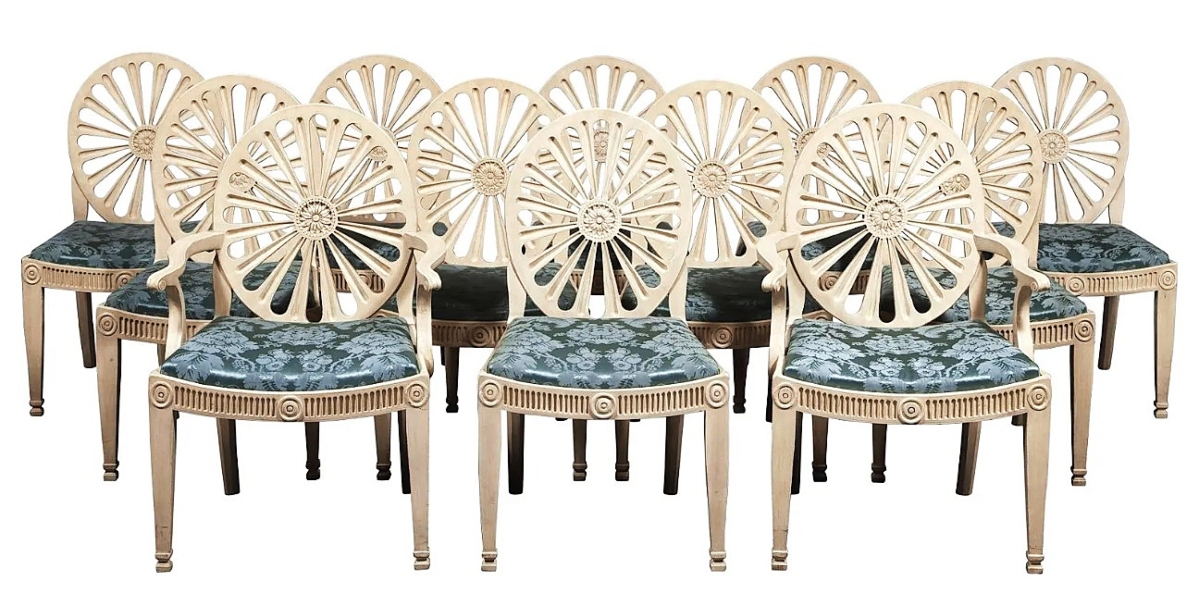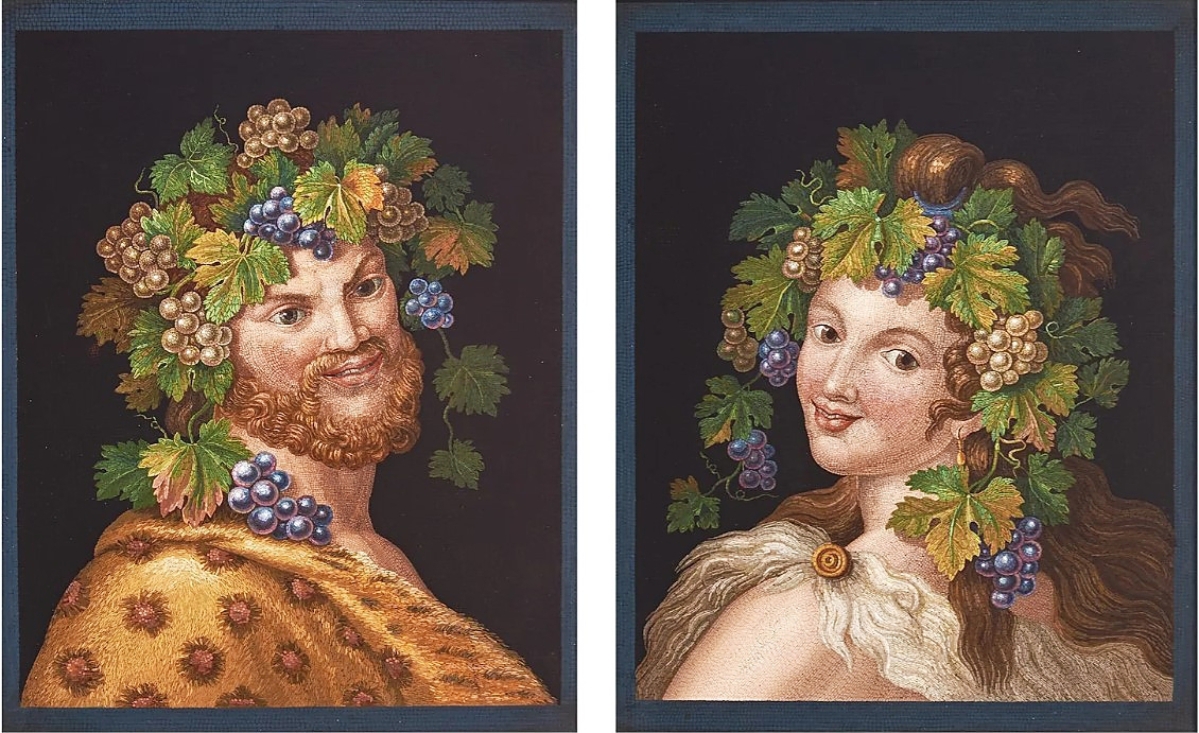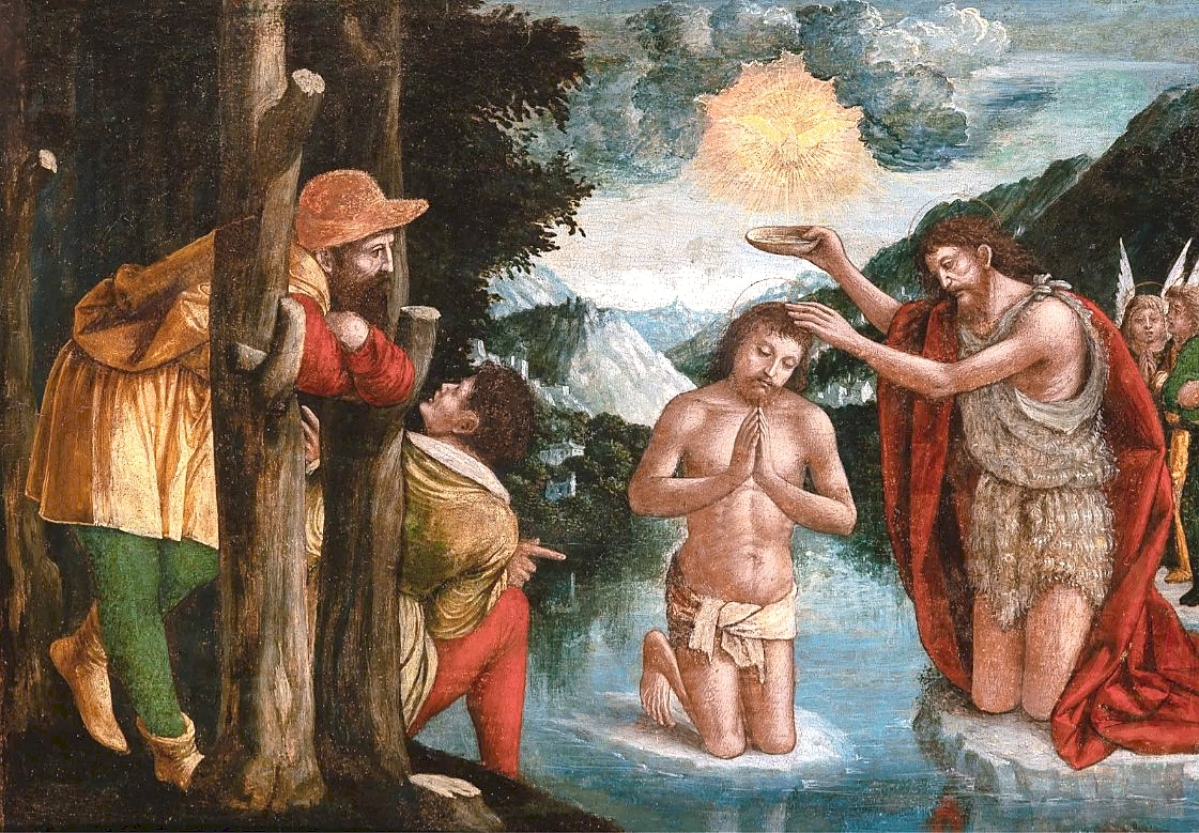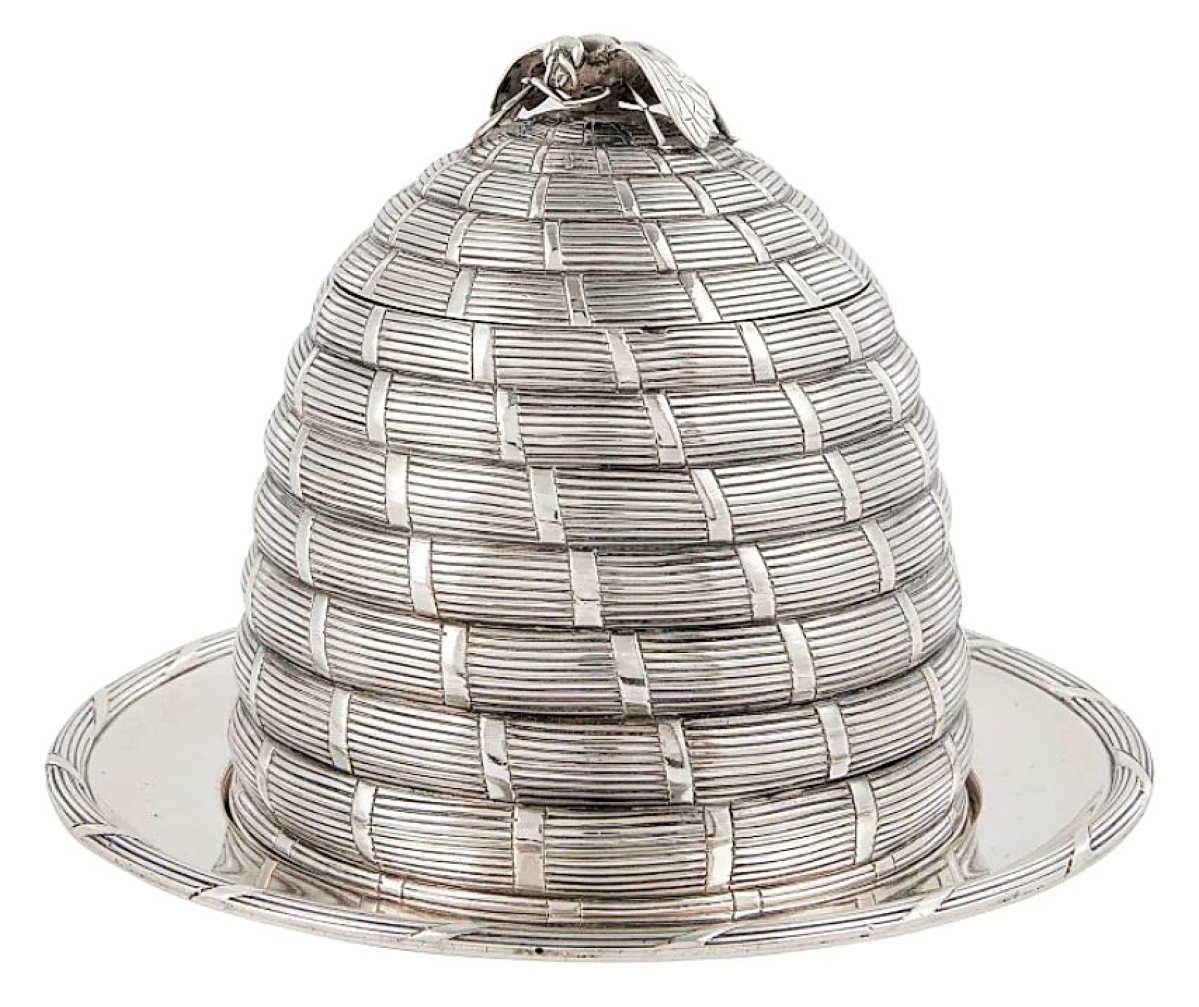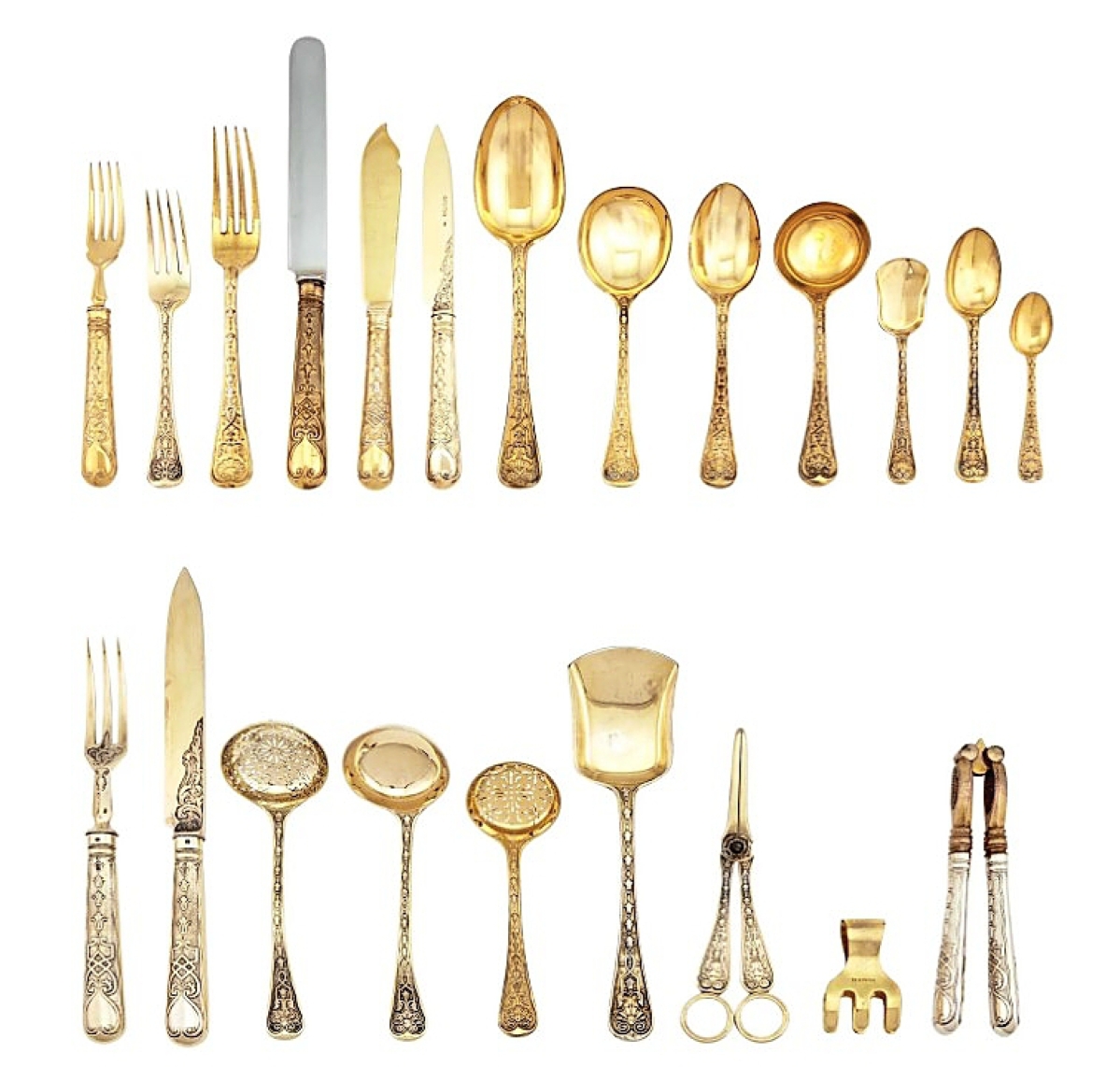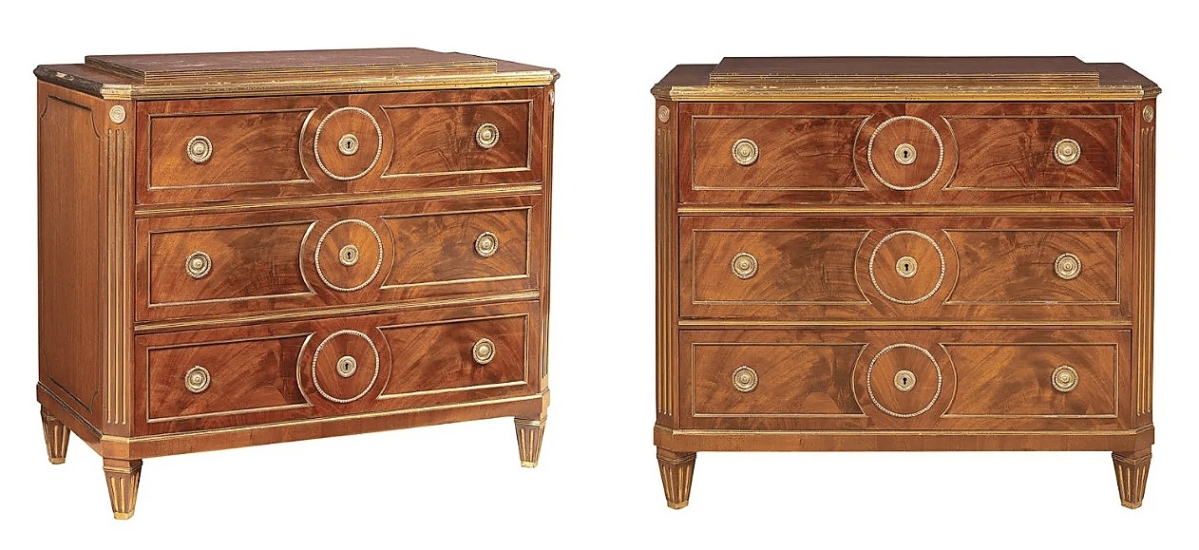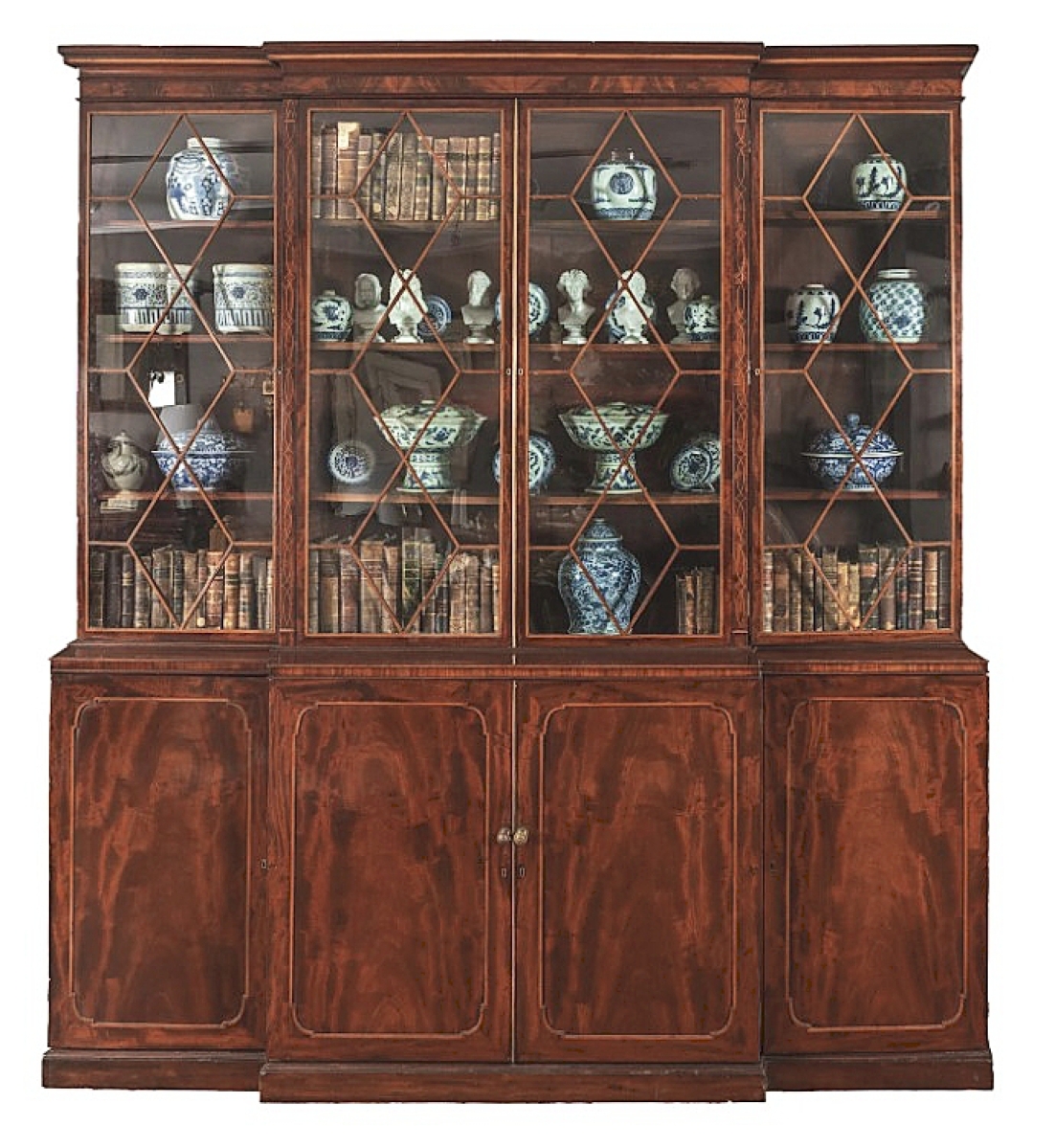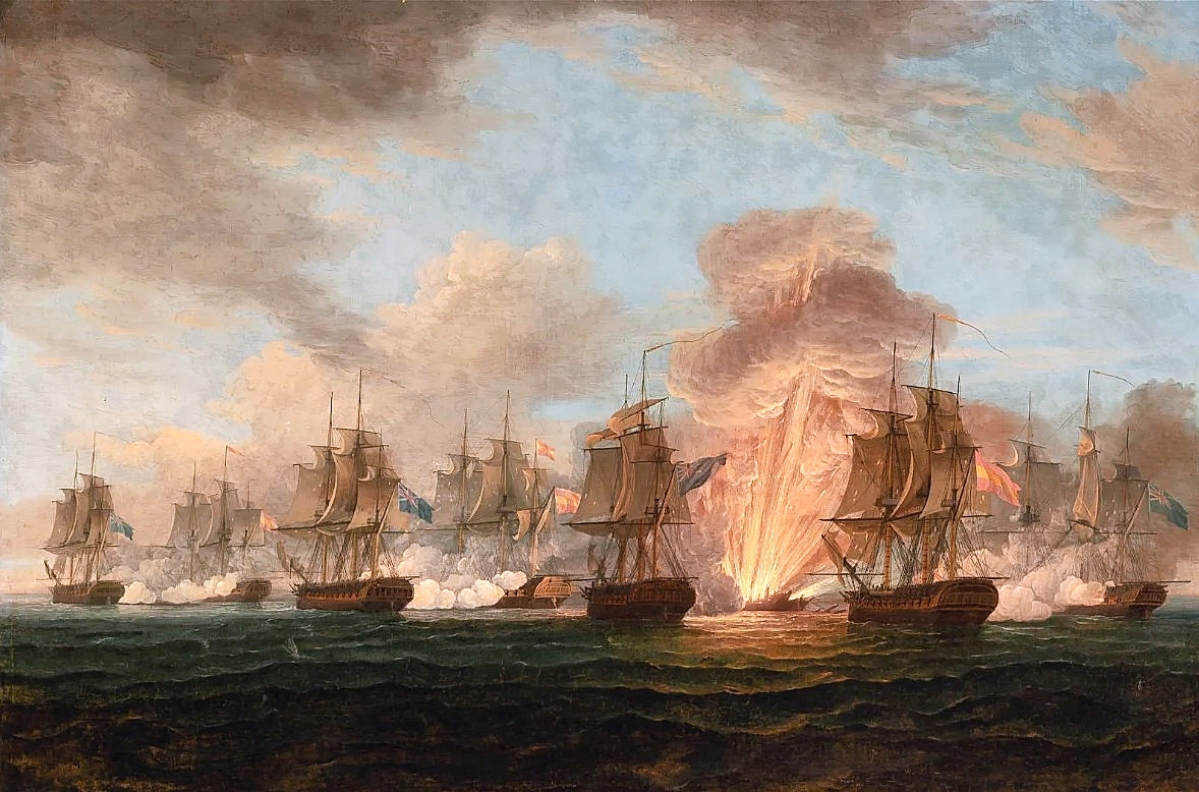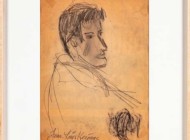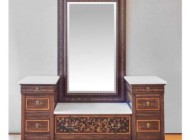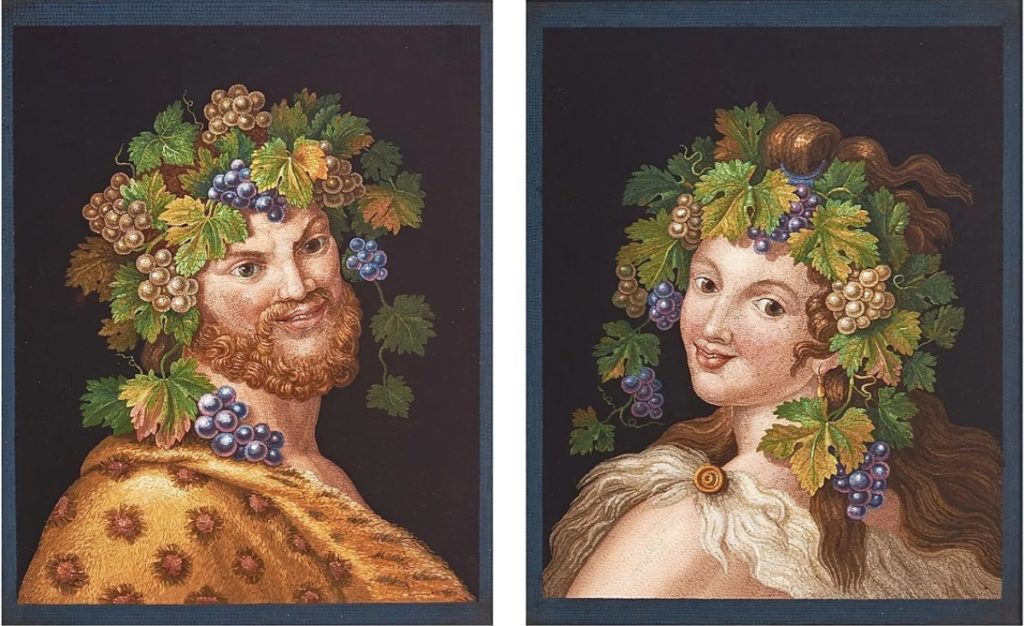
Made in the manner of Giacomo Raffaelli (Italian, 1753-1836) of Rome, these micromosaics saluted at $75,600 against a $15/25,000 estimate.
Review by Z.G. Burnett, Photos Courtesy Doyle New York
NEW YORK CITY – The sales at Doyle on May 24-25 were a journey through the tried and true categories of English and European fine and decorative arts, with many of the highest-selling lots exceeding their estimates. May 24 hosted Old Master to Nineteenth Century paintings and drawings, along with mostly English silver and some continental exceptions. May 25’s offerings expanded into English and continental furniture and decorative arts. The two sales combined topped $1.8 million for the auction house.
The headliner of the first sale was a portrait from the Flemish school, from the Fifteenth to the Sixteenth Century, once thought to be the Spanish General Gonzalo Fernández de Córdoba (1453-1515), also known as “The Great Captain,” for his military campaigns, including the Conquest of Granada and Naples. The painting is framed with an ornate, later placard that dedicates the portrait to Field Marshall Jeffery Amherst, 1st Baron Amherst (1717-1797), as a gift from Lord Frederick Campbell (1729-1816). Aside from this declaration, there is no other evidence to support the claim that this is indeed the general, and otherwise only posthumous likenesses survive. (Lord Amherst is the namesake of Amherst College and its location, Amherst, Mass.; his military career has attracted controversy in recent years.) The painting was inherited through the Amherst family, and despite the sitter’s ambiguous identity it sold for $81,900.
The second highest lot was similarly bellicose, although more overtly so. “The Battle of Cape Santa Maria: The Explosion of the Spanish Frigate Mercedes” by Nicolas Pocock (English, 1740-1821) is exactly as advertised, depicting the moment an English volley hit the Mercedes‘ magazine and blew it to the bottom of the Cape on October 5, 1804. The Spanish Atlantic silver fleet was intercepted after the English discovered that the Spanish had allied with the French against them, resulting in a naval battle that saw the Spanish surrendering within half an hour. The wreck of the Mercedes was discovered in 2007, and its cargo was returned to Spain after a lengthy legal dispute. This scene sailed to its new home for $44,100.
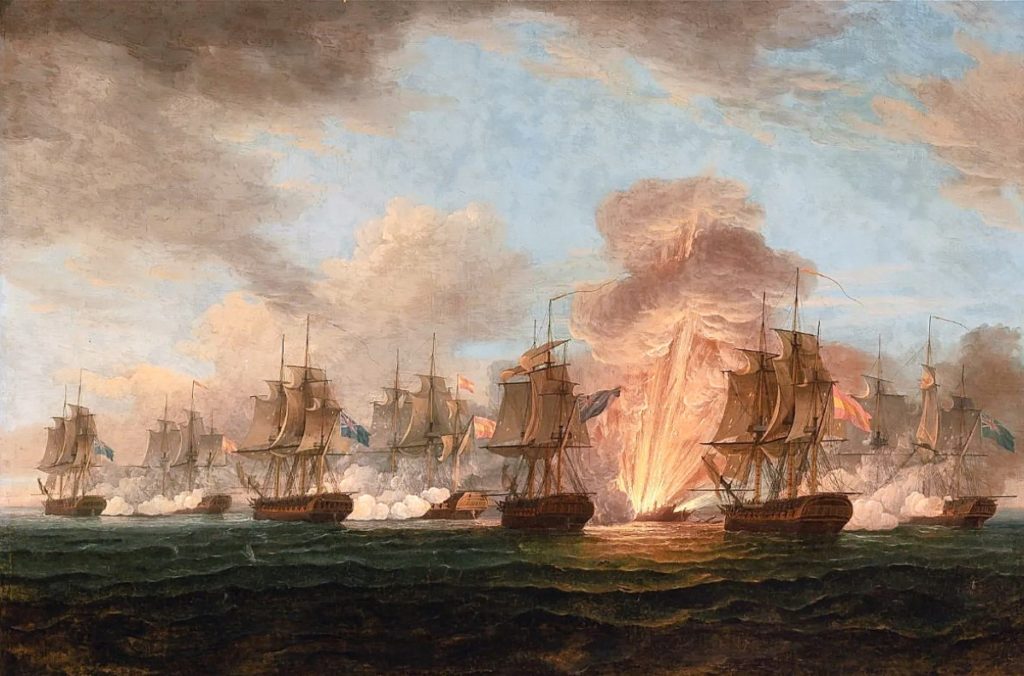
“The Battle of Cape Santa Maria: The Explosion of the Spanish Frigate Mercedes” by Nicolas Pocock (1740-1821), exploded at $44,100.
A George III sterling silver honey skep was a break in the action, but no less exciting. Modeled in the form of a beehive with a bee-shaped finial fashioned by Paul Storr (English, 1771-1844) in 1799, the top lifts to reveal a glass honey jar inside. Storr was England’s most celebrated silversmith during the first half of the Nineteenth Century, supplier to George III and George IV. At $37,800, the skep outshone its $10/20,000 estimate. Another English sterling silver lot performed in the top listings, a gilt Elizabethan pattern flatware service consisting of 296 individual pieces from assembled makers that sold for just under $16,400. Close behind that was a group lot of four graduated Dutch silver platters from the Eighteenth Century, which doubled their high estimate at $15,120.
Next to the sterling beehive was an oil on panel scene of “The Baptism of Christ.” According to the catalog, “Although this work has been traditionally attributed to [Vincenzo] Civerchio, it has been suggested that it is closer to the work of Francesco de Tatti, an artist active in Varese and Milan during the early Sixteenth Century.” The small panel sustained inpainting and past restorations, yet the lot was redeemed for $27,675 against its $10/15,000 estimate.
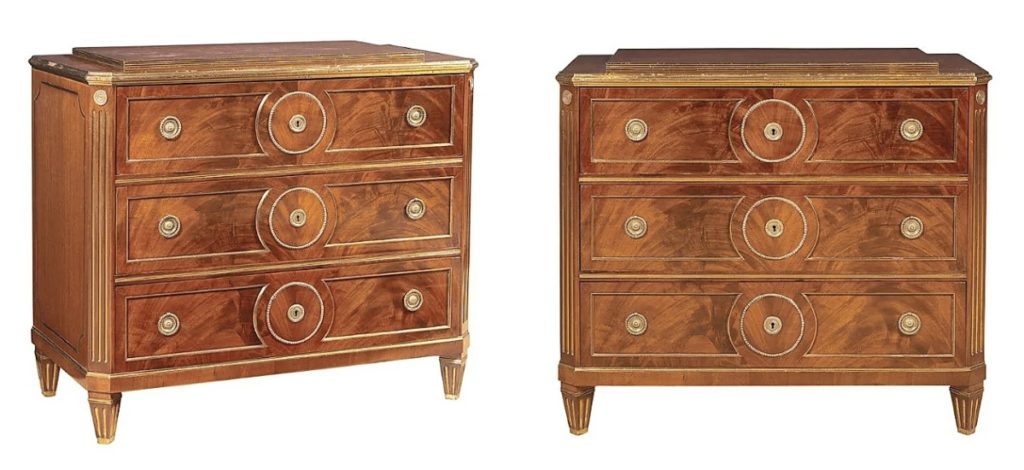
These Russian Neoclassical commodes paired up at $34,650 ($10/15,000).
George Romney (English, 1734-1802) made an appearance in the top lots with “Portrait of a Mother and Her Child,” one of three known versions of this painting. Thought to be modeled by Cecelia Lock, née Ogilvie, and her daughter due to a fragmentary label with a handwritten note reading “Mrs Lock/by Romney” on the rear, this is not quite enough to confirm this identification. Alex Kidson, author and a leading authority on Romney, writes, “[Lock’s] mother, who had patronized Romney years before, could in principle have commissioned this work as a ‘fancy portrait,’ in the knowledge that Romney was disaffected with orthodox society portraiture by this date.” Either way, the touching scene more than tripled its high estimate to sell for $20,160.
It would not be a Grand Tour sale without an architectural landscape of Rome. “Piazza della Rotonda” by Giuseppe Canella (Italian, 1788-1847) is an urban view typical of the artist, who traveled widely throughout Europe during his career and exhibited his landscapes at the Brera Academy in Milan as well as in the Paris Salons. He received commissions and even a gold medal from Louis Philippe I (r 1830-48) in 1830. The painting sold for $17,640.
The English and Continental Furniture and Decorative Arts Sale on May 25 was a rich collection of furnishings with strong offerings of Sèvres porcelain group lots and Georgian furniture, yet it was a pair Italian micromosaic panels that partied its way to the highest lot by nearly $40,000. The vibrant panels of Bacchus and a Bacchante are an intriguing couple, dressed in furs with crowns of grape clusters and vines, looking over their shoulders at the viewer – or perhaps at each other? Other examples of this motif have come to auction recently, and a similar pair are in the collection of The National Trust, but no one micromosaic is alike due to the painstaking and unique medium. Panels like this would have appealed to travelers “abroad” for souvenirs, and the pair fetched $75,600.
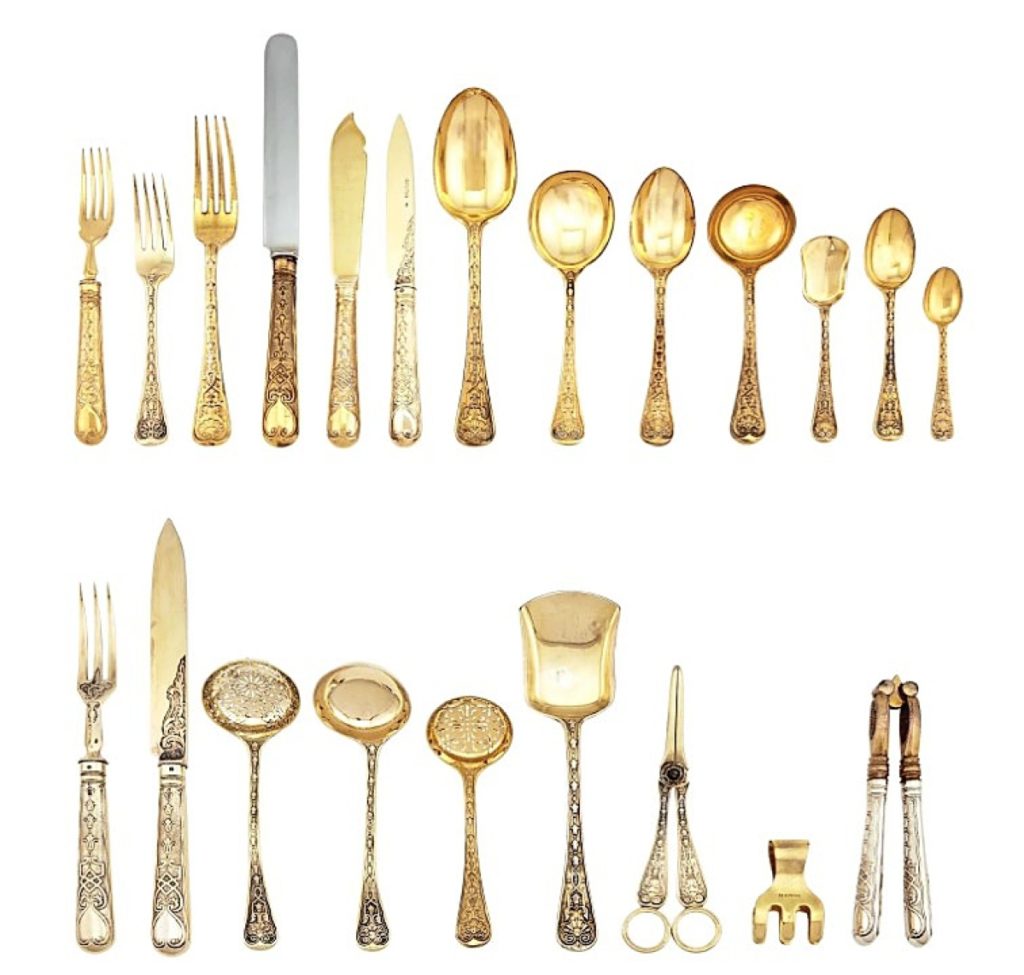
A 296-piece gilt English sterling flatware set in the Elizabethan pattern from various makers, assembled to achieve just under $16,400.
There were many lots of Russian Neoclassical decorative arts in this sale, but the highest figure belonged to a pair of brass bound mahogany commodes, circa 1800. Also known as “Russian Empire,” these commodes are elegantly but not heavily decorated as many of their period. With bookplate veneers that converge on their circular brass keyholes, the striking pair achieved $34,650.
The French were represented in the top listings with a Louis XIV gilt-bronze mounted ebonized bureau plat writing desk, which soared past its $800-$1,200 estimate to $28,350. The table appears to have sustained some damage and subsequent restoration, but this was no hindrance to the final sale price. Another gilt-bronze table reached the top listings, a Regency parcel-gilt rosewood marble and poryphyry inlaid specimen table that sold for over its estimate at $20,160. Attributed cabinet maker and sculptor George Bullock (English, circa 1777-1818), the tabletop exhibits multiple coats of arms and heraldic forms, interspersed with heptagonal-shaped stones of different colors.
Out of 389 lots, 48 of those were from the George III period (1760-1820) and two of those received the highest prices of the day. A late period mahogany breakfront bookcase, stamped with the mark of Gillows of Lancaster and London, sold for $25,200. The quality of Gillows furniture was renowned during this time, and authors such as Jane Austen (1775-1817) and William Makepeace Thackeray (1811-1863) referenced it in their fiction. A set of 12 painted George III-style dining chairs with sunburst chair backs also reached $16,380.
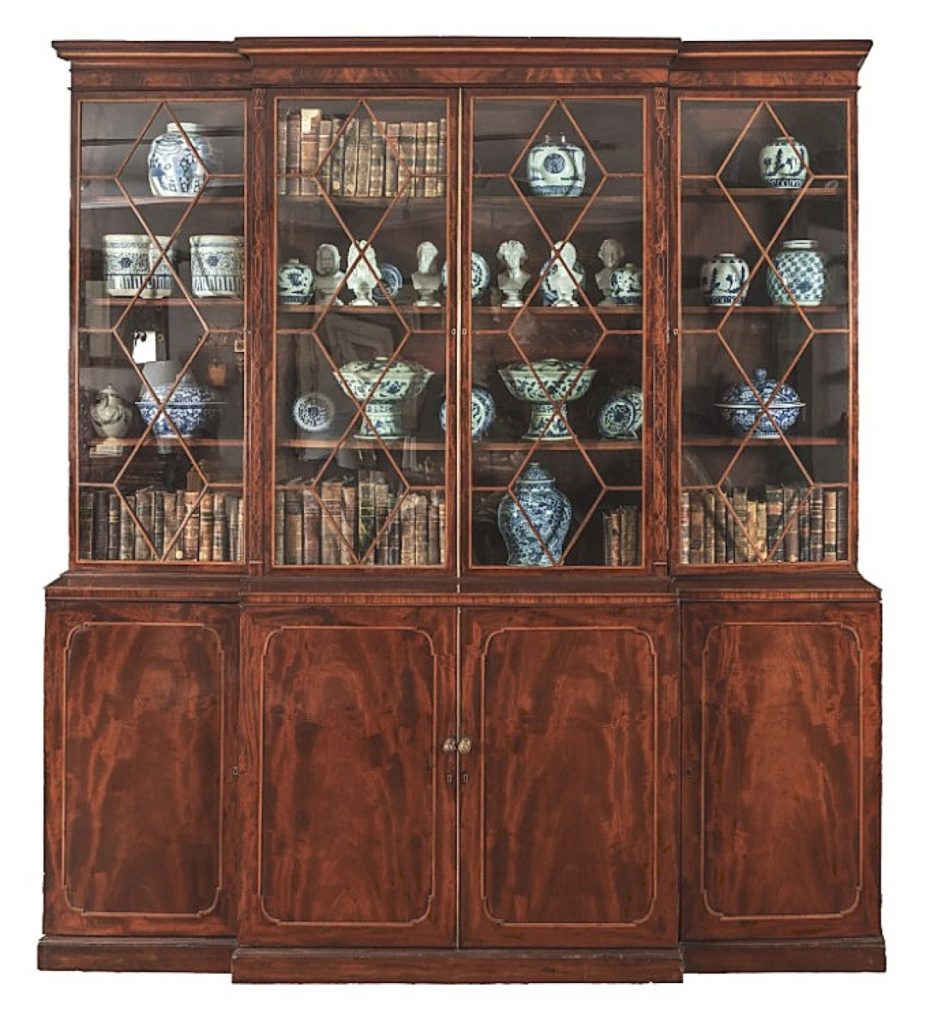
This George III mahogany breakfront bookcase from storied maker Gillows of Lancaster and London reached $25,200 ($25/40,000).
To pull the room together a Kum Kapi silk rug from Istanbul, circa 1900, sold for $23,940. With only minor wear, the medium-sized rug had a crimson field with gold palmettes and cloud bands within a midnight blue palmette and vine border. The other top of its category was an assembled Sèvres and Sèvres-style porcelain “Frises Riches” lot, also known as a cabaret. Most of the porcelain was Eighteenth Century, with decoration and gilding added in the Nineteenth Century. The pattern name refers to the blue drapery festooned with carmine jewels and floral swags. The set sold for $21,160 against its $3/5,000 estimate.
Prices quoted include the buyer’s premium as reported by the auction house. Doyle’s next auction, Luxury Travel: The Louis Vuitton Sale, will be conducted on June 21. For more information, 212-427-2730 or www.doyle.com.

